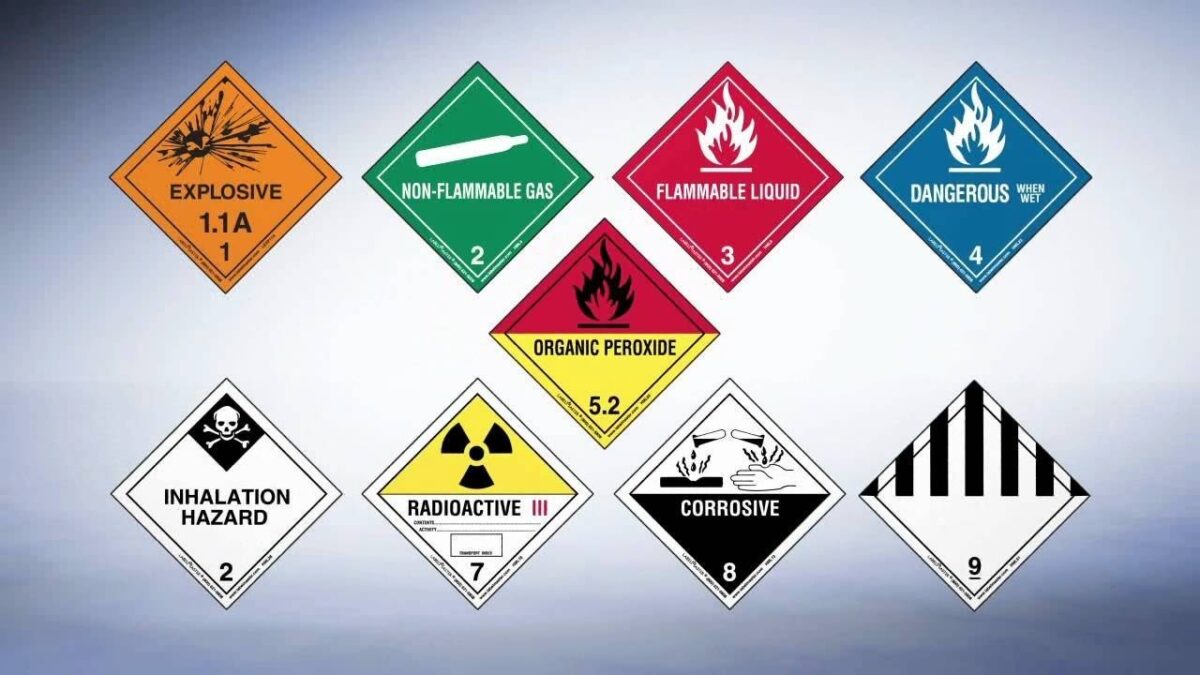When it comes to shipping hazardous materials, UN Class 9 dangerous goods occupy a unique category. These materials, which include a wide range of potentially hazardous substances like environmentally hazardous chemicals, lithium batteries, and asbestos, might not be as immediately dangerous as explosives or toxic gases, but they still require special handling and packaging. So, why is it critical to take extra care when dealing with Class 9 dangerous goods?
1. Diverse Nature of Class 9 Dangerous Goods
UN Class 9 dangerous goods cover a broad spectrum of materials, each with its risks. These goods can be anything from lithium batteries, which pose fire hazards, to substances harmful to the environment. Because the category is so varied, the risks associated with each material can differ greatly.
- Why It Matters: The diverse nature of Class 9 materials requires a tailored approach to packaging and handling, ensuring that each specific substance is transported safely. A one-size-fits-all solution won’t work, making it essential to use specialised packaging and handling procedures for different types of goods within this class.
2. Potential Environmental Hazards
Many Class 9 dangerous goods, such as environmentally hazardous chemicals or pollutants, pose a significant risk to the environment. Accidental spills or leaks during transportation could lead to widespread environmental damage, contaminating soil, water sources, and ecosystems.
- Why It Matters: Special handling and packaging, such as leak-proof containers and spill control measures, help prevent environmental disasters. If these materials are not properly packaged, even minor accidents can have major ecological consequences.
3. Lithium Batteries and Fire Risks
One of the most well-known Class 9 dangerous goods is lithium batteries. These batteries, found in everyday items like smartphones, laptops, and electric vehicles, can be highly flammable if damaged or exposed to extreme conditions during transport.
- Why It Matters: Lithium batteries require very specific packaging and handling to prevent short circuits, fires, or explosions. Special packing materials, such as insulated boxes and separators, are necessary to contain and protect them during transit.
4. Health and Safety Concerns
Some Class 9 materials, like asbestos or dry ice, pose risks to human health. Asbestos, for example, is known for its carcinogenic properties, while dry ice can cause burns or asphyxiation if not handled correctly. Even though these substances are not immediately lethal, exposure to them can cause long-term health problems.
- Why It Matters: Proper handling and packaging prevent exposure to these substances. This includes using sealed containers, protective equipment, and appropriate labelling to reduce health risks to transport workers and anyone who may come into contact with the materials.
5. Complex Regulatory Requirements
Shipping Class 9 dangerous goods requires adhering to strict regulatory guidelines set by international authorities, such as the United Nations (UN), International Air Transport Association (IATA), and International Maritime Organization (IMO).
These regulations specify everything from packaging types to labelling and documentation requirements.
- Why It Matters: Non-compliance with these regulations can lead to hefty fines, shipment delays, or even the rejection of your goods by carriers. Following the proper handling and packaging procedures ensures that your shipment is compliant with international standards, allowing for smoother transit.
6. Labelling and Documentation Requirements
Class 9 dangerous goods must be clearly labelled and documented to communicate the potential hazards associated with the materials. Labels like “Miscellaneous Dangerous Goods” or specific warnings for environmentally hazardous substances are crucial for alerting handlers, transport personnel, and customs officials to the contents of the shipment.
- Why It Matters: Improper labelling or documentation can lead to mishandling or accidents during transport. Correctly identifying and labelling Class 9 dangerous goods is vital for safety and compliance, ensuring everyone involved in the transportation process understands the risks.
7. Variability in Transportation Conditions
Dangerous goods in Class 9 can be affected by a wide range of environmental conditions during transit, including temperature fluctuations, pressure changes, or mechanical stress. These factors can increase the risks associated with materials like dry ice or lithium batteries.
- Why It Matters: Using appropriate packaging materials and handling methods ensures that Class 9 dangerous goods remain stable and safe throughout the journey. For example, insulated containers may be necessary for temperature-sensitive materials, while shock-absorbent packaging can protect against mechanical stress.
Conclusion
UN Class 9 dangerous goods may not always present the immediate, explosive hazards of other dangerous goods categories, but their diverse risks require specialised handling and packaging. From protecting the environment to ensuring compliance with strict regulations, every aspect of transporting these materials demands attention to detail. Whether you’re dealing with lithium batteries, environmentally hazardous chemicals, or health-threatening materials like asbestos, understanding the unique challenges of Class 9 goods is essential for safe and efficient transportation.
Related posts
Categories
Advertisement


